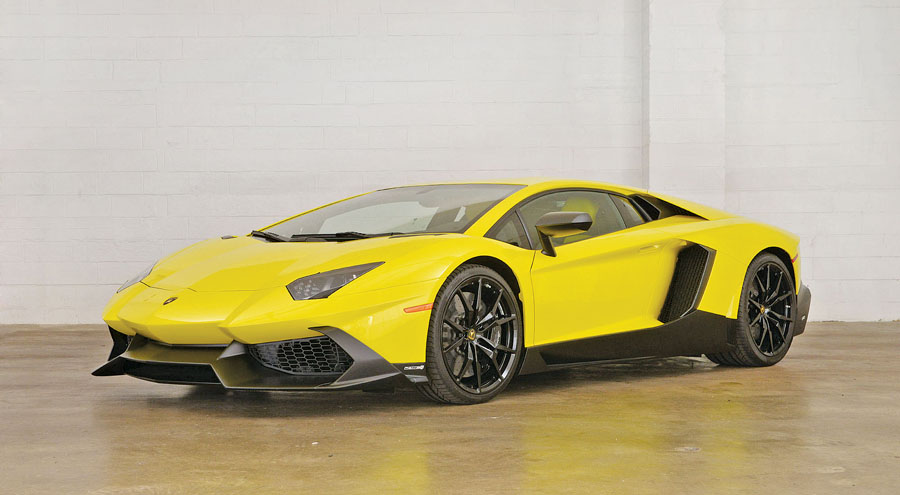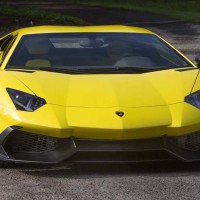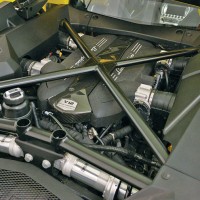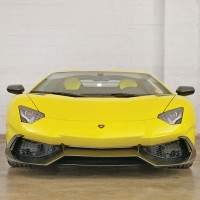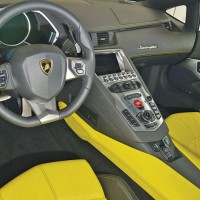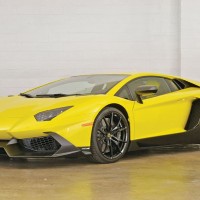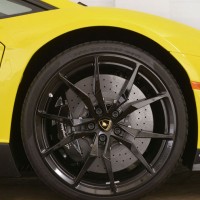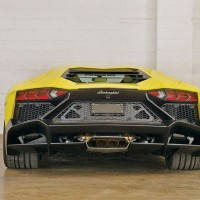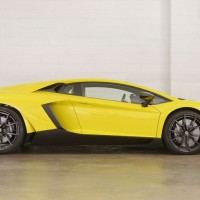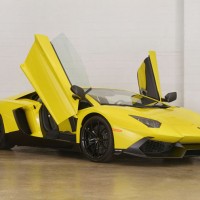SCM Analysis
Detailing
| Vehicle: | 2013 Lamborghini Aventador LP720-4 50th Anniversary Coupe |
| Years Produced: | 2013–14 |
| Number Produced: | 100 |
| Original List Price: | $548,000 |
| SCM Valuation: | Median to date, $440,000; high sale, $504,000 (this car) |
| Tune Up Cost: | $5,000 |
| Chassis Number Location: | Inside windshield on top of dashboard |
| Engine Number Location: | Stamped on side of block |
| Club Info: | Lamborghini Club of America |
| Website: | http://www.lamborghiniclubamerica.com |
| Alternatives: | 2014 Ferrari 458 Speciale, 2014 McLaren 650S, 2011 Spyker C10 Aileron |
| Investment Grade: | C |
This car, Lot 212, sold for $504,000, including buyer’s premium, at the Keno Brothers’ New York City Sale on November 19, 2015.
Although there is generally a firm line drawn between admirers of vintage sports cars and the modern output of the factory, I have to admit that as a big fan of Lamborghinis from the 1960s and 1970s, I rather like the current production coming from Sant’Agata Bolognese.
As I am a former owner of a 1969 Lamborghini Islero, perhaps the most conservative car ever to wear the badge, that might be shocking to some.
But here’s my thinking: Arguably, from the Scaglione-designed 350GTV prototype and certainly from the Miura onwards, the Lamborghini brand has always stood for drama on wheels — arresting visuals backed up with stunning performance.
One of the main challenges the company has faced was the expectations set up by the almost dizzying pace of new model introductions in its first 15 years. In that time we saw the 350GT, 400GT 2+2, Islero, Espada, Miura, Countach and Urraco come from the small factory.
That the company survived for the next 15 years making virtually only two models — the Countach and then the Diablo — is a credit to perseverance and some blind luck. Backed more firmly than ever by the cash from VAG’s Audi and the benefit of shared development costs for the “volume” Huracán model, the company seems to have a secure future.
Today’s managers from across the Alps have also been excellent brand stewards who seem to have recaptured the edginess that the best Lamborghinis have always had — while successfully injecting a very Teutonic reliability and usability into the mix.
A new wave of car collectors
There is a notable trend of late that has seen big prices realized for late-model supercars at collector car auctions. It is generally accepted that what drives these sales is the presence of a younger generation of buyers — among them the so-called “Tech Billionaires.” A recent Forbes Magazine list of the clan identified 100 of the richest tech bigwigs. Of them, 51 are U.S. citizens, and 33 are from Asian nations. Their average age was 53, which is apparently 10 years younger than the general population of billionaires.
Given the rule that each generation of car collectors lusts for cars from their teenage years, tech billionaires should be buying cars from the class of 1977. So are the buyers of modern-day supercars 16-year-old billionaires? Not quite. There are, however, a good number of hyper-successful 30-, 40- and 50-somethings who want to show up at the hot club of the month driving something their equally well-favored pals can’t buy from their favorite salesperson with a text on their iPhone.
So, rather than have just another Lamborghini, Ferrari or Bugatti, they’ll have the one they made 100 of. Or better yet, one of 80 Ferrari 599 SA Aperta models. Or not just a Veyron, but a Super Sport.
The long-term prospects for continued enthusiast interest doesn’t appear to be the primary motivation in some of these purchases. Instead, the motivation is often the immediate gratification of possessing a toy none of your other friends got for Christmas.
A re-blast from the past
A 2016 Aventador LP700-4 has an MSRP of $493,095, with an SV bringing $88k more. Only 600 of these will be made, making the 100 50th Anniversary cars true rarities in today’s production schemes.
The market appeal of the Anniversary Countach could not have been lost on Lamborghini’s management. Launched in 1988 to commemorate the 25th anniversary of the marque, the Anniversary was largely a cosmetic package, although improved air handling from the body modifications did give it a higher top speed than the 5000 QV base car.
Lamborghini built 657 during a two-year run before it was replaced by the new Diablo. The 25th Anniversary Countach brings a slight premium over the 5000 QV, but they still sell for one-third of an LP400 and a quarter of what an early Periscopio now brings.
At the time I was writing this piece, an Anniversario was being offered for sale at the Miami Lamborghini dealer with an asking price of $589,950.
Our subject car, a 2013, had only covered 507 miles from the factory, while the Florida car had been driven a comparatively massive 1,216 miles since being built in 2014.
Typical used regular-production LP700-4 models are on the market from the mid-$300k to mid-$400k range, with miles from around 800 up to 4,500. The MSRP of the Anniversario was $548,000 at launch in 2013, so our subject car sold very near that number.
A string of specials
The Veneno coupe, built in three units with an MSRP of $4.5m, and the Sesto Elemento, of which 20 exist, are truly rare cars. Lamborghini has embarked on a regular program of specials, which is a wise move for a company with limited volume. It gives an air of exclusivity to a regular production model, and it gives the media something to write about, photograph and video.
More importantly, a special edition provides an opportunity for our target customer to buy something that every other would-be Lamborghini customer in his locale might not have.
There were 100 of the Anniversario coupes built, and as the catalog description mentioned, 43 were sent to North America. Given the identical color scheme they all share, it still might be likely that more than one could show up to an event in Beverly Hills, Miami or Vancouver. How embarrassing would it be to casually stroll over to the wrong car?
Depreciation and fun driving
This almost-new car is a depreciating, albeit very gently, asset, and I believe it will continue to be such for the new owner. The depreciation curve may be slow and gentle, but I would not be surprised to see it last quite a few years longer.
My advice is to drive it and enjoy it. ♦
(Introductory description courtesy of Keno Brothers.)
